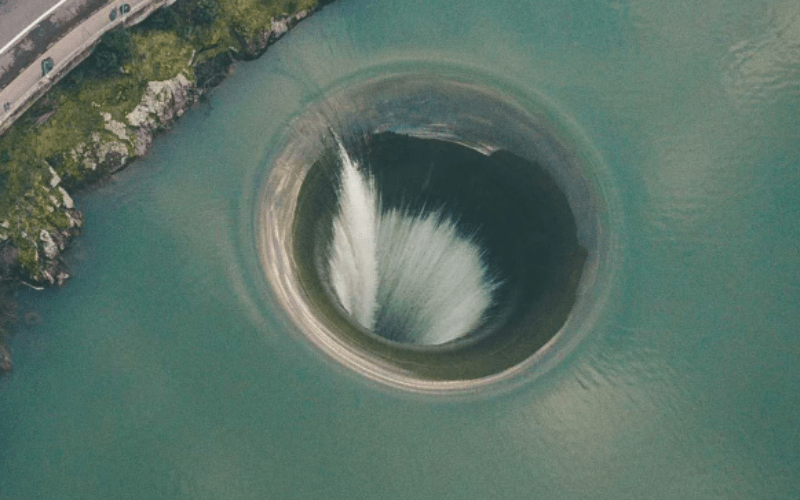California’s “Glory Hole” refers to the Morning Glory Spillway at Lake Berryessa, located in Napa County, about 80 miles north of San Francisco. It’s a unique engineering feature of the Monticello Dam, designed to manage excess water when the reservoir exceeds a certain level. The spillway is a large, funnel-shaped concrete pipe, 72 feet wide at the top, that drops water 200 feet down into Putah Creek below. When active, it creates a dramatic whirlpool effect, drawing crowds of onlookers due to its striking appearance.

The spillway activates automatically when the lake’s water level surpasses 440 feet, a threshold tied to the dam’s capacity.
This has happened only about 25 times in its nearly 70-year history since the dam’s completion in 1957, reflecting California’s erratic wet and dry cycles. Recently, it began spilling again in early February 2025, after heavy winter rains from atmospheric rivers pushed the lake beyond that mark—the first significant activation since 2019. Officials note it could remain active for weeks, given more rain in the forecast.
The nickname “Glory Hole” is a local shorthand, though its official name comes from its resemblance to the morning glory flower. It’s one of a few such passive spillways in California, with similar designs at Trinity Lake and Whiskeytown Lake. While mesmerizing, it’s not without risk—swimming near it is banned, and in 1997, a woman tragically died after being pulled in, the only known fatality linked to it. Today, buoys keep people at a safe distance.